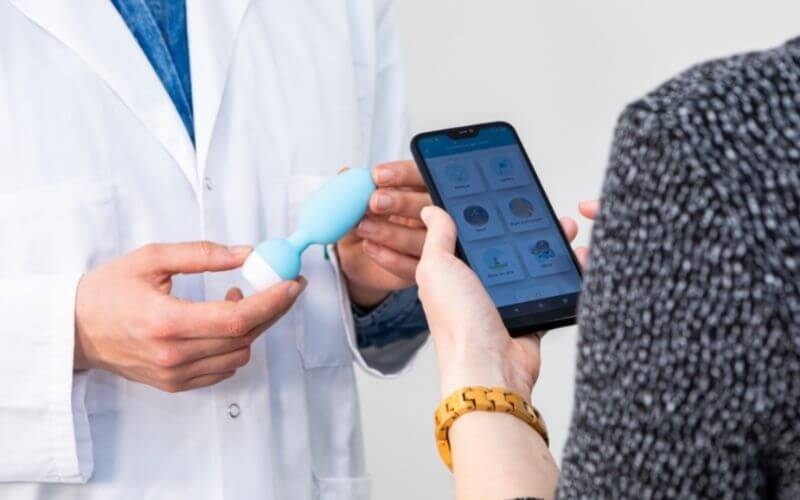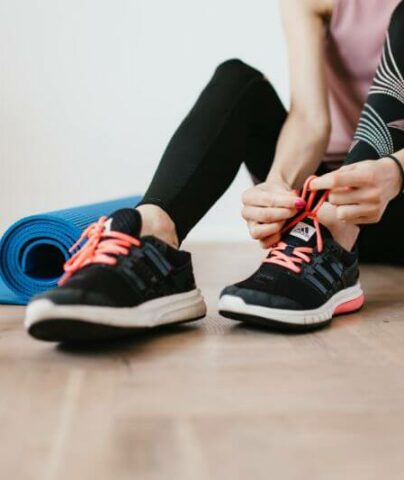
Pelvic floor physical therapy : 3 easy exercises you can do at home
There is no perfect time to do your pelvic floor physical therapy exercises. The key is to do them regularly to tone and maintain the pelvic floor muscles. Here are 3 pelvic floor exercises that are easy to do at home.
Three pelvic floor physical therapy exercises without equipment
The pelvic floor is a set of muscles that supports internal organs and ensures the proper functioning of the sphincters. Its tone prevents urinary leaks and organ descent/prolapse, while also improving sensations during sexual intercourse.
That’s why it’s important to take care of it and strengthen it with Kegel exercises. In fact, healthcare professionals prescribe pelvic floor rehabilitation after pregnancy (vaginal delivery or C-section). With a midwife or physiotherapist, it is fully covered.
But you can do these exercises whenever and wherever you want (on an empty bladder):
- 🛏️ lying in your bed.
- 🛋️ on your couch in front of the TV.
- 💼 at the office, sitting on your chair.
- 🤱 while you breastfeed.
- 🚗 in your car at a red light.
1. Awareness
This first pelvic floor exercise will help you to be aware of your pelvic floor and to locate it.
So tighten your pelvic muscles as if you’re holding back pee. Hold the contraction for a few seconds before releasing. Congrats! you just did a kegel. Now repeat those several times.

- Gradually increase the duration of muscle contractions.
- Remember to relax the muscles for twice the time of contraction exercises (for example: tighten for 4 seconds, relax for 8 seconds).
- Never perform kegels in the toilet while urinating to avoid urinary infections.
- Synchronize your breathing and contract your pelvic floor on an exhale.
- Do not contract other muscles at the same time. Place your hand on your buttocks, thighs, or abdomen to check that they are not contracting.
And in general, contract your pelvic floor during abdominal effort (lifting heavy objects, sneezing, coughing, laughing…) and exhale while pulling in your stomach to protect your pelvic floor.
2. Advanced pelvic floor contractions
With this second pelvic floor exercise, you will become aware of the extent of your pelvic floor.
This involves increasing the difficulty level. Contract the anterior pelvic floor (urinary and genital pathways), then posterior (anal pathway).
Inhale gently, then exhale calmly while imagining that you are holding your urine (urinary sphincter).
Then, imagine you are holding in gas to contract your anus. Each time, hold the contraction for several seconds before releasing.
Our tips for performing your pelvic floor physical therapy exercises effectively:
- Perform a series of 10 contractions/relaxations while gradually increasing the duration of contraction.
- The duration of relawation should be longer than contraction
- First, do the exercise lying down, then try sitting, or even standing.
- Only engage your pelvic floor during contraction.
3. False inspiration
Highly effective for strengthening the pelvic floor and reducing stress, the “stomach vacuum” is inspired by yoga. This pelvic floor exercise will tighten the pelvic floor muscles and contract them more deeply.
Lie on your back, knees bent and pelvis flat on the floor. Take a deep breath, then gently breathe out while contracting the pelvic floor and pulling in the belly.
After full exhalation, hold your breath. Try to inhale but keep your mouth and nose closed. If the movement is correct, you will feel your ribs open and your belly hollow.
Finally, slowly release and breathe in normally. Repeat 3 to 10 times according to your level of comfort. And take a break between repetitions.

Devices to support your pelvic floor rehabilitation at home
Active exercises with a biofeedback trainer
First, a vaginal biofeedback trainer allows you to perform active pelvic floor exercises while being fully aware of your contractions. This allows for a more effective learning of the movements and lasting results.
Through a mobile app, the trainer also provides real-time feedback, result tracking, and a reminder function. Everything you need to stay disciplined in your sessions.

Pelvic floor physical therapy exercises with the Emy trainer
The Emy biofeedback trainer is connected to a fun mobile app. It allows you to do exercises at home and here are its many advantages:
- Pelvic floor exercises in the form of games, based on medical protocols.
- Active work on different types of contractions: fast, repeated, and long.
- Several training programs available, according to your needs (postpartum, urinary leaks, improvement of intimate relationships…).
- Sessions from 5 to 20 minutes, as desired.
- Difficulty level automatically adapts to your level, your previous training results, and the current tone of your pelvic floor.
- Option to use the app for free, without a device.

Passive pelvic floor exercises with Geisha balls
To be used 10 to 30 minutes per day, Geisha balls stimulate reflexive contractions.
Available in different sizes and shapes, they can be worn during your daily activities. Body movements activate these vaginal balls, creating reflexive pelvic floor contractions.
Attention, if the balls become painful or uncomfortable, remove them immediately. Also, do not perform these strengthening exercises for too long, as it may exhaust your pelvic muscles. Just a few minutes a day should be enough.

Free Pelvic floor guide
Find out how to strengthen your pelvic floor to prevent bladder weakness and improve intimate pleasure! 💥
Why is it important to rehabilitate the pelvic floor?
Many factors influence the tonicity of your pelvic floor without you even realizing it. Whether it’s a matter of posture or just because you carry heavy loads daily, it is important to quickly adopt the right habits and protect your pelvic floor while performing these daily tasks.
There are also many other factors that can damage your pelvic floor and against which you cannot fight. Pregnancy, aging and tissue degeneration, the onset of menopause, and hormonal changes are included. As you may have understood, there is no age limit to strengthen your pelvic floor with exercises!

By following our advice, and regularly doing pelvic floor physical therapy exercises, you won’t even realize you’re working on it! And guess what? The benefits you could reap from it are remarkable.




